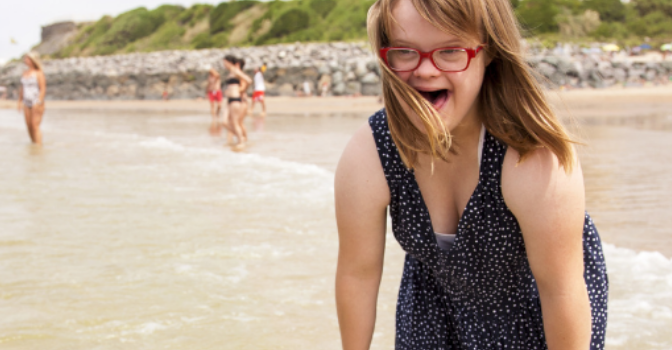Therapy that doesn’t ‘feel’ like therapy is good for you and your child. It provides a welcome break from indoor activities and can be a fantastic way to continue the work a therapist does with your child beyond their normal learning environment.
Last month in partnership with our friends at Source Kids, we brought you some fabulous ideas for using playground play for therapy.
Today, we take a look at therapy at the beach. Whether you live near the beach or only get to visit during holidays, remember these easy ways to incorporate therapy without your kids even knowing!
Jumping waves.
Jumping waves is a great all-round activity. It not only strengthens the heart which can help improve cardiovascular health, it increases oxygen capacity and stimulates metabolism.
Then there’s the gross motor action of jumping, timing and balance. So get your feet wet together and enjoy the many benefits of wave jumping.
Playing ‘catch’ with the waves.
Try playing catch with the waves – you run towards the breaking waves and then run back away from the wave so it doesn’t ‘catch’ you. Playing catch is fun as each wave is different.
This one works on all those big leg muscles too – quads, glutes and calves.
Swimming.
Swimming exercises every muscle in the body. If your child is not a strong swimmer, there are plenty of floatation suits that will help keep them safe while they work on swimming skills using their arms and legs.
Digging holes and making sandcastles.
Sand is perfect for sensory work but for some sensory sensitive children, you may have to do some desensitising work and take things slowly. Even some adults dislike the feeling of sand on their skin.
Digging holes and making sandcastles are just a couple of ways to move the body and get those creative juices flowing. Is your sandcastle going to have a moat? Will the moat have water? Will the castle be big or small? What can you find to decorate it?
And of course, someone will need to jump on the sandcastle at the end which is a great way to work the leg muscles.
Playing beach cricket or soccer.
Take your cricket set, AFL, NRL or soccer ball to the beach and have a game with the family. The fun of playing on the sand provides a different sensory experience and a great workout for the legs.
The added action of throwing the ball or hitting it with a bat works on gross motor skills.
Other sensory opportunities.
The tactile environment of the beach offers additional opportunities for sensory exploration with all the natural ‘touch’ objects – the sand, water, sticks, shells and coral. Have fun and explore!
These fantastic ideas for having fun and building skills along the way come from our friends at Source Kids.
Leap in! can help.
Get specialist advice from our dedicated team, experienced in helping people get the most out of their NDIS Plans.
To find out more, call us on 1300 05 78 78, visit our website (online chat available) or email crew@leapin.com.au
Further Reading
The benefits of play therapy in early intervention.
Therapy in disguise at the park: Special Source Kids edition.
Simple (and cheap) at home therapy hacks: Special Source Kids edition.

